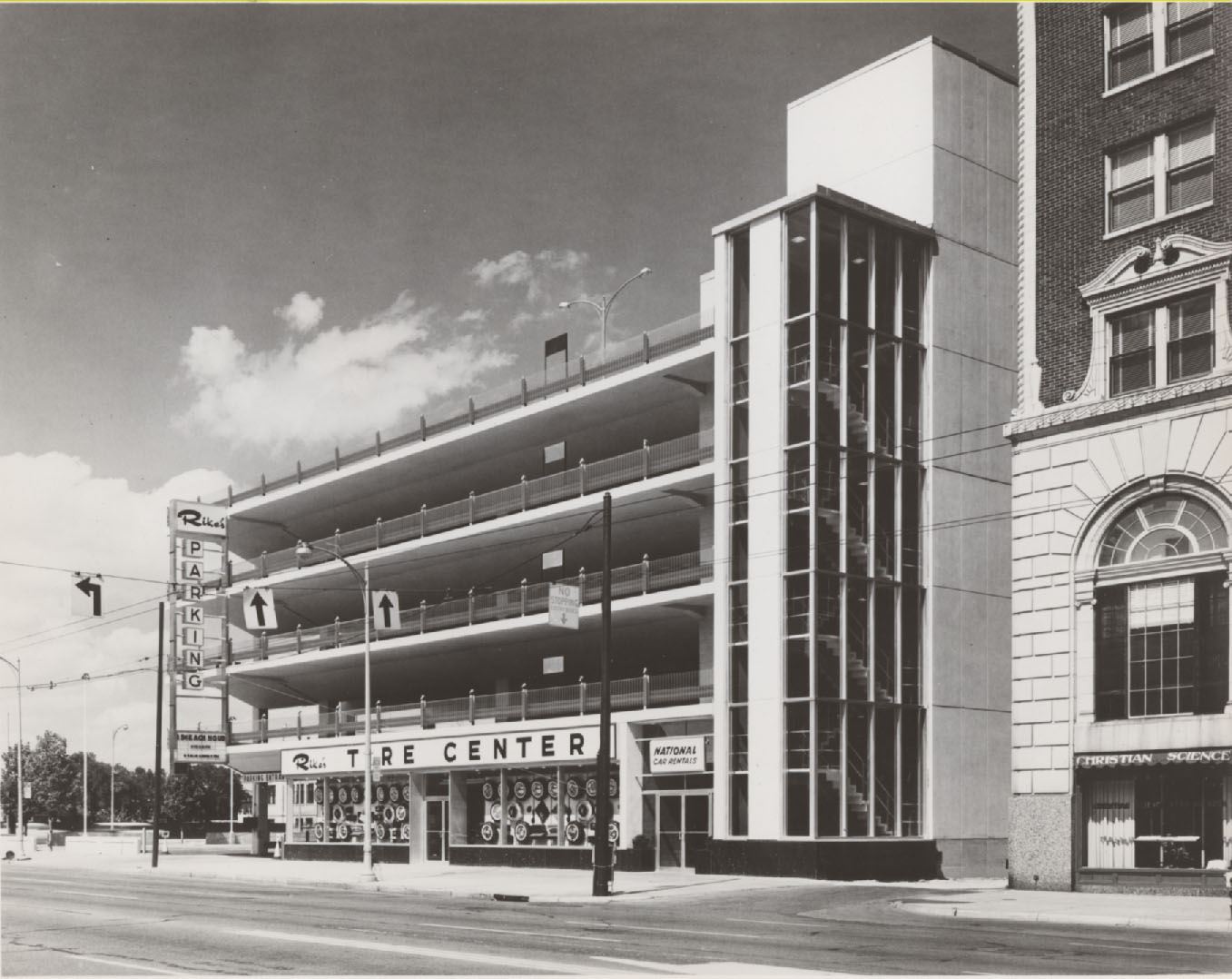This is the story of the extraordinary lengths Mr. Rich went to prove the integrity of his design of a garage in Dayton Ohio in the late 1950s, as told by Richard C. Rich.
“This was a two-module garage with a sloped floor and a parapet wall in between that was approximately 24-30 inches in height and 4-5 inches in width. The City (Engineers) would not approve the garage to open, maintaining that the parapet wall wasn’t strong enough to withstand the impact of a car going between 12-15mph and directly hitting it. It was hard for me to understand how a car would get going that speed in a garage and into the wall”. We sent some of our engineers down to discuss this problem with them further. Our engineers came back stating that the City did not budge on their findings regarding the wall. The City had hired some independent engineers of their own who came up with a formula showing that the wall would break down upon impact from a car hitting it directly at 12-15 mph. I’m not a formula kind of man, so I went with our engineers to the next meeting to resolve the issue so that our client could open their garage.
I had advised the client (owner of the garage) that I wanted to test the wall before the meeting. I told him of my plan to drive a car into the upper level parapet wall at the 12 to 15 mph speed. He volunteered to loan me his car, but I refused since I was not sure myself what was going to happen to the car hitting the wall at that speed. So, I rented a car and made sure it was fully insured. It took me 5-7 tries to hit the wall without hitting the brakes first. I finally got up the nerve and drove the rented car into the wall at the required speed. There was not much of a mark on the wall at all, but there was certainly damage to the front of the car. I left everything as it was at the scene of impact and then went to the meeting with the City.
As everyone was discussing the formula I said ‘I don’t know anything about your formulas, but I tried it out and I’d like you to come over and see what had happened.’ At that point the whole group, including our engineers, the City and their independent engineers, went over to take a look at what had happened to the wall. The wall showed very little distress, just a few scratches from where the car had impacted it. The car, on the other hand, suffered front end damage. They all reviewed the site and concluded that their formulas did not work because it did not treat the car as a compressible object. The car absorbed the shock of the impact resulting in front end damage, but the wall showed little impact. Upon review, the wall passed the City’s inspection and our client was able to open the garage.”
“It was truly an experience. It’s tough not to automatically hit the brakes when you see the wall coming at 12-15mph.”



